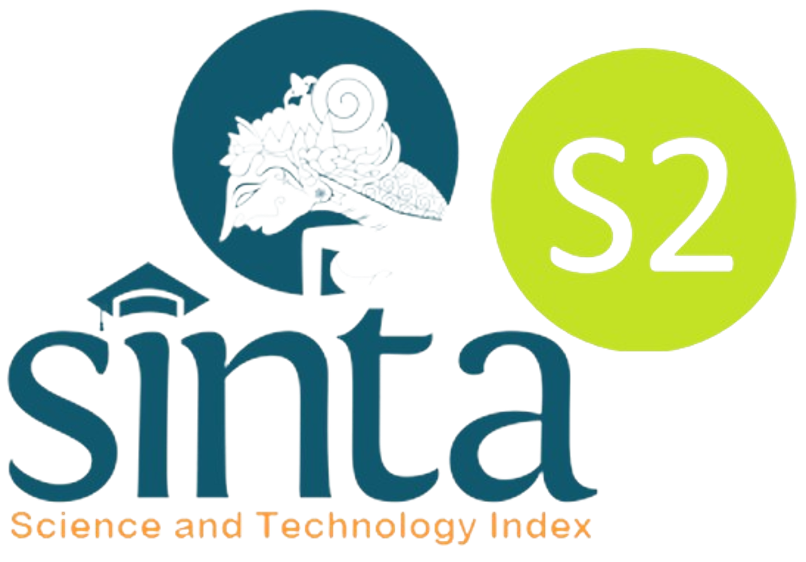Identifying Lecturer–Student Interaction and Preference Toward Four English Skills
Abstract
Abstract: Identifying lecturer–student interaction and preference toward four english skills. Objectives: The aim of this research was to find out the patterns of classroom interaction and preference toward four English skills for students of Islamic Financial Banking Department. Methods: The data collection procedures in the research were based on classroom participant observation, student interviews, and questionnaire. The language that used for student interviews was English, and sometimes combined with Indonesia language. The last instrument was questionnaire used to know the students’ preference toward four English skills. Findings: The findings of this research indicated that the classroom interaction can be created through mutual understanding and appriciating between lecturer and student, in form of the manner of lecturer’s performance in the classroom, presenting interested and motivated materials, and applying reinforcement. Conclusions: The students’ preference toward four English skills indicated that 61 (61%) students liked reading skill very much.
Keywords: Lecturer-student interaction, four English skills, interview.
Abstrak: Mengidentifikasi interaksi dosen-mahasiswa dan kecenderungan terhadap empat keterampilan berbahasa inggris. Tujuan: Penelitian ini bertujuan untuk menemukan pola-pola interaksi dalam kelas dan mengidentifikasi kecenderungan terhadap empat keterampilan berbahasa Inggris bagi mahasiswa jurusan Perbankan Syariah. Metode: Metode pengumpulan data dalam penelitian ini meliputi observasi, wawancara, dan angket. Wawancara menggunakan bahasa Inggris, dan dalam hal tertentu menggunakan bahasa Indonesia. Angket digunakan untuk mengetahui tingkat kecenderungan mahasiswa terhadap empat keterampilan berbahasa Inggris. Temuan: Interaksi dalam kelas dapat tercipta karena adanya saling memahami dan menghargai antara dosen dan mahasiswa, dalam hal ini dosen menampilkan performa yang layak dan meyakinkan dalam menyajikan materi ajar dan memotivasi mahasiswa, serta menerapkan metode reinforcement. Kesimpulan: Kecenderungan mahasiswa terhadap empat keterampilan berbahasa Inggris ditunjukkan dengan 61% mahasiswa cenderung menyukai keterampilan membaca.
Kata kunci: Interaksi dosen-mahasiswa, empat keterampilan berbahasa inggris, wawancara.
Full Text:
PDFReferences
Andru. (2017). Analysis of IRF on Cassroom Interaction in EFL Speaking Class. Journal of English Education, Literature, and Culture (EDUKTA, Vol. 2 No. 1.)
Brown, Douglas H.. 1994. Teaching by Principles: An Interactive Approach to Language Pedagogy. Prentice Hall Regents; New York.
Desi Annisa’Ula. (2017). An Analysis of Classroom Interaction in the Teaching Learning Process of Speaking at Tenth Grade Students of SMK Al Husain Keling. Jurnal Edulingu. Vol. 4 No. 2.
Dina Septryana P. (2015). The Analysis of Teacher Talk and the Characteristics of Classroom Interaction in English as Foreign Language Classroom. Journal of English and Education. Vol. 3 (2).
Erfiani, I. & Kisman S. (2017). Teachers’ Oral Feedback in EFL Classroom Interaction (A Descriptive Study of Senior High School in Indonesia). ELT Worldwide Journal of English Language Teaching. Vol. 4 No. 2.
Hanna Sundari. (2017). English as Foreign Language at Lower Secondary Schools in Indonesia. Researchgate.
Likiwati W. (2017). Classroom Interaction in EYL Classroom. Magister Science Journal Edisi No 41. Maret 2017.
Li L. Shouhui & Xinying C. (2011). Beyond Research: Classroom Interaction Analysis Techniques for Classroom Teacher. Redesigning Pedagogy.
Mahbubur Rahma M. (2014). Learning English Through Interaction in an EFL Classroom.
Mbaga S. (2015). Classroom Interaction: A Key Effective Teaching and Learning in Secondary School in Tanzania. A Case of Arusha City.
Nata, W.A. & Taloko, J.L. (2014). Students Talk Encouted in Intensive Course Class of English Department in a University in Surabaya. The 61 st TEFLIN International Conference Book.
Nur Wasi’ah, (2016). A Study of Teacher Talk in Classroom Interaction at an Islamic Senior High School. OKARA Jurnal Bahasa dan Sastra. Vol. 10 No 1.
Pratama D. W. (2015). Teacher and Learners’ Talk in the Classroom Interaction at Tenth Grade Students of SMA Jawahirul Hikmah Tulungagung. Skripsi.
Rezki F. (2016). The Analysis of Teacher Talk and Learner Talk in the Classroom Interaction ( a Description Study First Grade Islamic Senior High School in Margahayu. rezkifirdaussps.blogspot.com
Rini Triani P. (2013). Classroom Interaction: An Analysis of Teacher Talk and Student Talk in English for Young Learner (EYL). Journal of English and Education. Vol. 1 (1), pp 163-172.
Semi S. & Siti U. (2015). An Analysis of Teacher and Student Talk in the Classroom Interaction of the Eight Grade of SMP Negeri 18 Purwerejo. Journal Vision. Vol. 4 No. 2.
Sitti N. (2017). Teacher Talk in Classroom Interaction. Researchgate.
Suharyanto H. (2018). Menyiasati Kegagalan Pembelajaran Bahasa Inggris sebagai Bahasa Asing. Riksa Bahasa: Jurnal Bahasa, Sastra, dan Pembelajarannya. Vol. 4 No 2 (2018).
Tisome Nugent. (2018). The Impact of Teacher-Student Interaction on Student Motivation and Achivement. Researchgate Journal.
Winarti. (2017). Classroom Interaction: Teacher and Student Talk in Interaction Class Program (ICP. KnE Social Science: LSCAC Conference Procedings The 4th International Conference on Language, Society, and Culture in Asian Contexts.
Usman K. (2004). Classroom Interaction in the English Department Speaking Class at State University of Malang. Jurnal Ilmu Pendidikan. Jilid 2 No. 3.
Refbacks
- There are currently no refbacks.
Copyright (c) 2019 Jurnal Pendidikan Progresif

This work is licensed under a Creative Commons Attribution-ShareAlike 4.0 International License.
View My Stats

The copyright is reserved to The Jurnal Pendidikan Progresif that is licensed under a Creative Commons Attribution-ShareAlike 4.0 International License.





